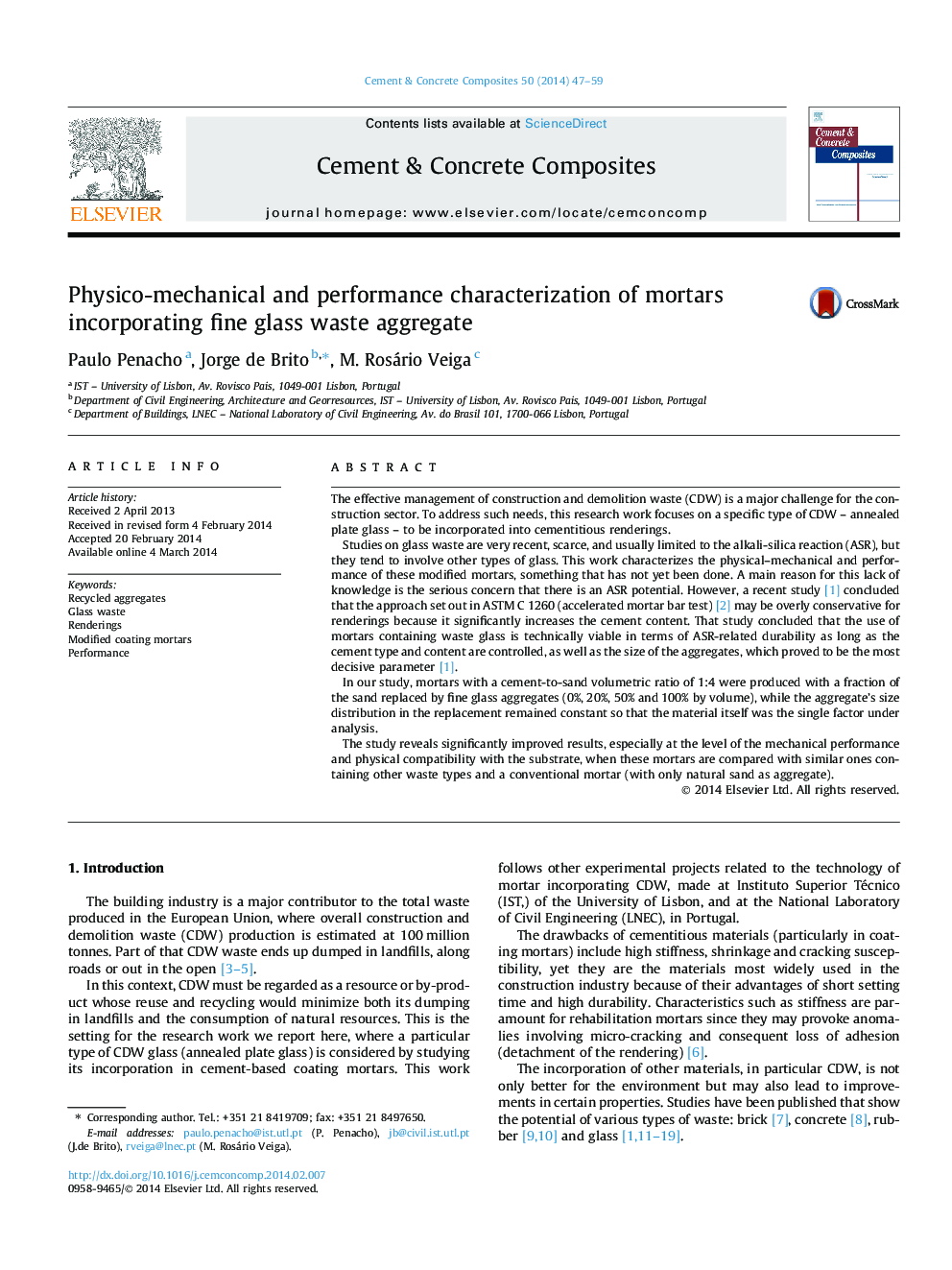| Article ID | Journal | Published Year | Pages | File Type |
|---|---|---|---|---|
| 1454660 | Cement and Concrete Composites | 2014 | 13 Pages |
The effective management of construction and demolition waste (CDW) is a major challenge for the construction sector. To address such needs, this research work focuses on a specific type of CDW – annealed plate glass – to be incorporated into cementitious renderings.Studies on glass waste are very recent, scarce, and usually limited to the alkali-silica reaction (ASR), but they tend to involve other types of glass. This work characterizes the physical–mechanical and performance of these modified mortars, something that has not yet been done. A main reason for this lack of knowledge is the serious concern that there is an ASR potential. However, a recent study [1] concluded that the approach set out in ASTM C 1260 (accelerated mortar bar test) [2] may be overly conservative for renderings because it significantly increases the cement content. That study concluded that the use of mortars containing waste glass is technically viable in terms of ASR-related durability as long as the cement type and content are controlled, as well as the size of the aggregates, which proved to be the most decisive parameter [1].In our study, mortars with a cement-to-sand volumetric ratio of 1:4 were produced with a fraction of the sand replaced by fine glass aggregates (0%, 20%, 50% and 100% by volume), while the aggregate’s size distribution in the replacement remained constant so that the material itself was the single factor under analysis.The study reveals significantly improved results, especially at the level of the mechanical performance and physical compatibility with the substrate, when these mortars are compared with similar ones containing other waste types and a conventional mortar (with only natural sand as aggregate).
